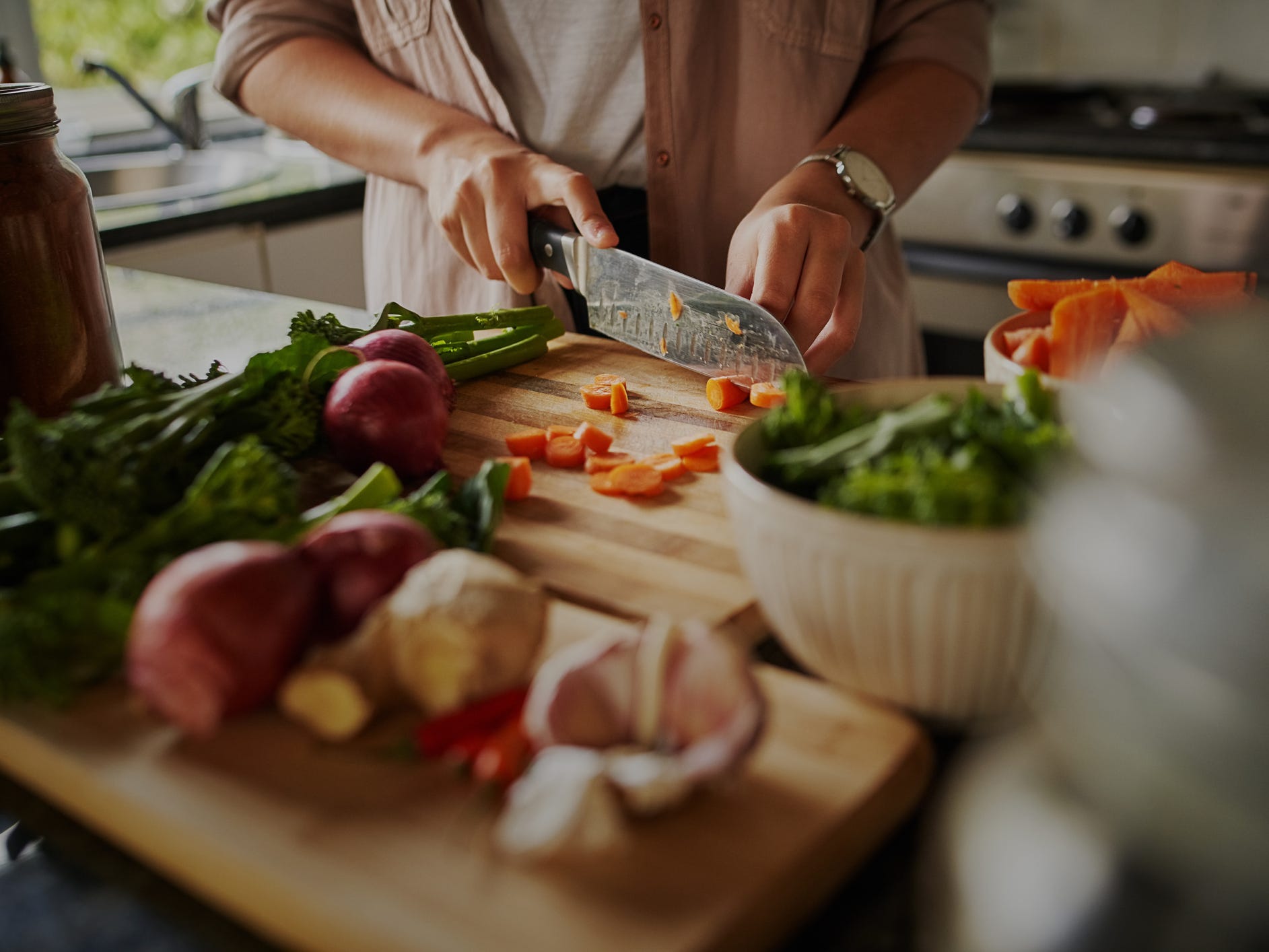
- The combined paleo-vegan, or "Pegan" diet, aims to offer the best of both worlds for healthy eating.
- The diet's creator, Dr. Mark Hyman, said the key is nutrient-dense whole foods instead of processed junk.
- Eating Pegan encourages people to be flexible in dieting and find what works for their unique needs.
- Visit Insider's homepage for more stories.
Dr. Mark Hyman, coined the term "Pegan" for a laugh, but the hybrid of paleo and vegan eating styles could offer the best of both diet plans.
"The Pegan Diet is for everyone. It's an inclusive set of principles with room for exploration, depending on your preferences," Hyman, a family physician who specializes in a food-as-medicine approach to health, told Insider.
His new book, The Pegan Diet, aims to unite the healthiest aspects of two popular diets for an easy-to-follow, sustainable strategy of eating well.
As a Pegan, you can enjoy plenty of fruits and vegetables, healthy fat sources, and, if you want, occasional high-quality meat, fish, and eggs. At the same time, the diet cuts out processed foods, added sugar, and refined grains. With this strategy, Hyman said going Pegan could be a solution for serious health problems such as obesity, insulin resistance, metabolic dysfunction, and other chronic diseases linked to unhealthy eating.
Vegan and paleo diets share a common enemy: the standard American diet
A few years ago, Hyman was sitting on a doctor's panel between two colleagues with different dietary philosophies -a paleo advocate and staunch vegan – whom were at odds about which diet is best. To break the tension, Hyman joked that he was Pegan, or a happy medium between the two.
It may seem, at first glance, that the vegan and paleo diets are on opposite sides of the dietary spectrum. One relies heavily on beans, grains, and sometimes, processed imitations of animal products, like faux burgers and soy cheese. The other sticks to what our hunter-gatherer ancestors might have eaten centuries ago, prioritizing meats, seeds, and very specific types of produce.
What both adversaries have in common, though, is a rejection of what we know are the many unhealthy food options of modern life, including fast food and processed foods, refined grains, and sugar.
"A few years ago I realized that most dietary philosophies, including paleo and vegan, had far more in common with each other than most realize, and far, far more in common with each other than with the standard American diet," Hyman said. "Of course, you can be a chips and soda vegan, or a bacon and no veggies paleo eater, but the best whole food expressions of each are so similar."
And while the specifics vary, both diets can prompt people to focus more on whole, nutrient dense foods, including leafy greens and antioxidant rich berries.
Protein is a matter of preference
The main difference between vegan and paleo is whether to include animal products. Peganism leaves that up to individual choice - Hyman argues that high-quality meat and eggs can be healthy for both people and the planet.
"If you really dig into the science, you'll see that regardless of whether someone is a meat eater or a vegetarian, those who are health-conscious overall live longer, healthier lives," Hyman said.
If you do choose to eat meat, a pegan diet calls for moderation, treating it as a side dish or flavoring rather than a main course.
Quality matters when it comes to carbs and fat
In addition to uniting vegan and paleo, the Pegan diet also bridges the gap between the other great controversy of modern nutrition - low carb vs. low fat.
The answer, according to Hyman, is that it's the quality, less than the quantity, that matters for these macronutrients.
While his version of a healthy diet is 75% carbohydrates (by volume, not by calories), those should come from mainly fruits and vegetables, not sugars and refined grains.
"A hot fudge sundae and cauliflower both fall into the carbs category, yet they are entirely different foods," Hyman said.
Similarly, Hyman said dieters shouldn't fear fats, but instead should focus on healthy sources like avocado, nuts and seeds, and olive oil (similar to the much-touted Mediterranean diet).
"Contrary to misguided advice offered over the last thirty-plus years, the right fats are needed for healthy skin, cells, brain functioning, fertility, and more," he said.
The Pegan diet offers a flexible approach in a world ruled by dietary dogma
The biggest advantage of the Pegan diet, compared to the plethora of programs available for healthy eating, is that it allows for people to adapt it to their own needs.
If you try the Pegan diet, Hyman encourages experimentation to find what works best for your needs. Some people, for instance, may benefit from eating some animal products in moderation, including saturated fats, while others do better on a low-fat diets of almost all plants.
"It's not about being perfect; it's about feeding your body nutritionally dense food 90 percent of the time and leaving room for pleasure foods and treats," he said.
As such, the eating plan helps people focus on what Hyman thinks is the real priority of a diet, which is making people healthier, instead of maintaining restrictions and rules as a matter of principle.
"Perhaps the real focus should be on shifting people from an obesogenic, disease-causing, nutrient-depleted diet to one rich in whole foods and protective foods that promote weight loss, health, and well-being," he said. "That is the goal of the Pegan diet."